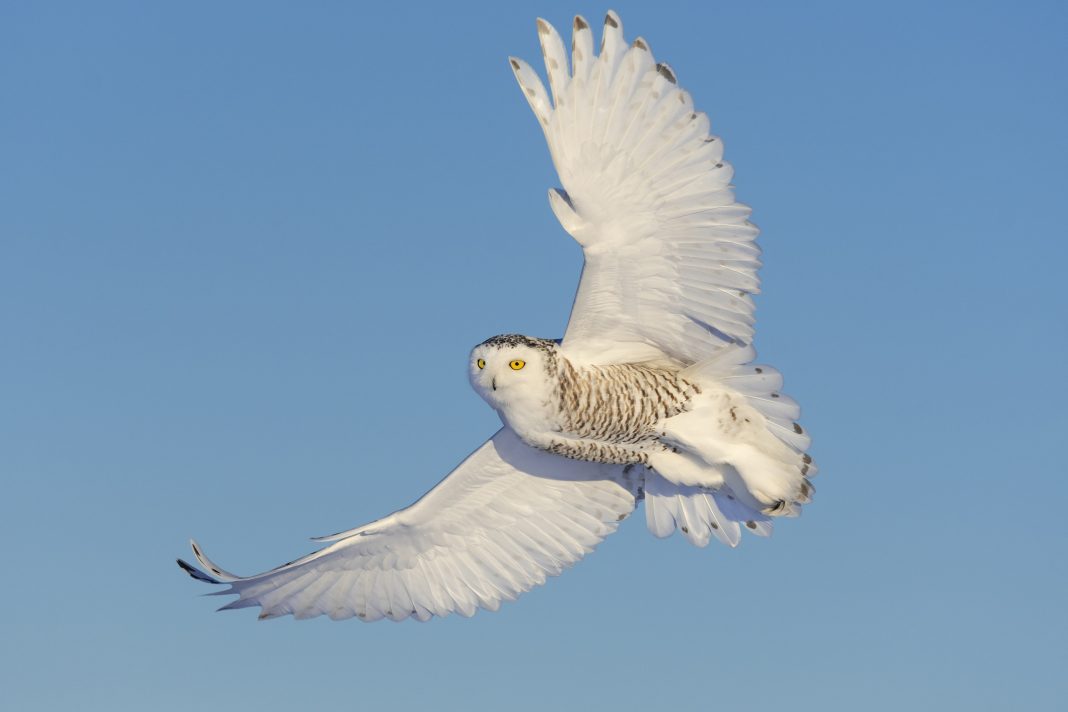Professor Guillaume Blanchet from Université de Sherbrooke considers why modelling biodiversity is an essential part of protection and how we can model biodiversity better
The snowy owl is one of the most charismatic animals in the world, maybe in part because of the immense success of Harry Potter, which has a snowy owl as a pet. Even if it is a well-known species and one that almost everyone has little to no trouble spotting in the sky if it flies (even high up) above our head, scientists are still finding it very challenging to draw on a map where it lives and reproduces. To show how much trouble even the best scientists in the world have in defining where the snowy owl is found, I present here two expert maps suggesting where the snowy owl may be found.
Figure 1 was built by the Cornell Lab of Ornithology and Figure 2 is from BirdLife International. Both groups gather some of the best bird specialists in the world. Yet, the difference between the two maps is stunning, diverging in many ways by hundreds of square kilometres. Why do both teams end up building such different maps for the snowy owl, one of the most charismatic and easy-to-identify birds?
Part of the reason why the whereabouts of the snowy owl is so tricky to draw on a map is that this bird is mainly found in places where few people live (the northern region of the world), making it difficult (and expensive) to gather data on this unique species. Moreover, it is a species that rarely reproduces at the same location each year, making it more difficult to track because of its behaviour. But this is only part of the reason. Underlying the two maps are complex models that process the information available (from sightings made by citizens to what we know of the species’ behaviour). Needless to say, different models were used to obtain both maps.
With the arrival in the past few years of artificial intelligence (AI) algorithms and, more recently, of generative AI like ChatGPT, the world is learning how powerful advanced modelling techniques combined with cutting-edge computing can be. Currently, companies and governments are making considerable investments to capitalise on what AI can bring to them across all aspects of society. From a technical perspective, many of these problems are immensely challenging, as is the case for many biodiversity problems, such as drawing a map of where the snowy owl can (and cannot) be found.

How can we model biodiversity better?
Roughly a year ago, I attended a conference where someone asked an audience of approximately 100 biodiversity experts the following question: “Assuming we have unlimited funding, what do we need to build better models for biodiversity?” The general answer that was given by most was “More data!” Of course, having more quality data is vital because it helps us get more refined results.
However, suppose the modelling techniques available cannot use the data properly or cannot answer our more pressing biodiversity questions (where does it live? Where does it reproduce? Which area should be protected to prevent it from going extinct?). In that case, more data will bring little help. So, how can we get better at building a biodiversity model? We need people who are knowledgeable about biodiversity and can develop the models we need to answer biodiversity questions.
In this respect, ecologists are an odd group of people compared to other fields of science. Typically, when a young person chooses a scientific career and wants to avoid any form of mathematics, they will choose a field like biodiversity science or ecology. This is quite different from physics or chemistry, where mathematics is commonly used.

Investing in modelling biodiversity: A key to success
Investing in a more quantitatively oriented training programme for ecologists is the best way to move forward; however, developing such a programme is a long process. In the mean time, to advance the development of biodiversity modelling, we need to work in tight collaboration with statisticians and computer scientists to develop models that will answer the questions of ecology, and biodiversity, not the questions that statisticians and computer scientists think are interesting for biodiversity and ecology. This requires a lot of investment in time and money.
Government and funding agencies need to understand that the biodiversity crisis we are currently living through can only be approached if international transdisciplinary biodiversity initiatives are put in place with a strong focus on modelling biodiversity, not only gathering data for it. Although these projects end up living in software-implementing methods and models, such initiatives require huge investments. It may seem that developing models to protect biodiversity is far away from investing in actions on the ground. However, for these actions to work, models that account for the complexity of biodiversity and ecological systems are essential. It is only through carefully built models that we can propose actions and decisions that will have the highest chances of protecting the world’s biodiversity.

This work is licensed under Creative Commons Attribution-NonCommercial-NoDerivatives 4.0 International.


